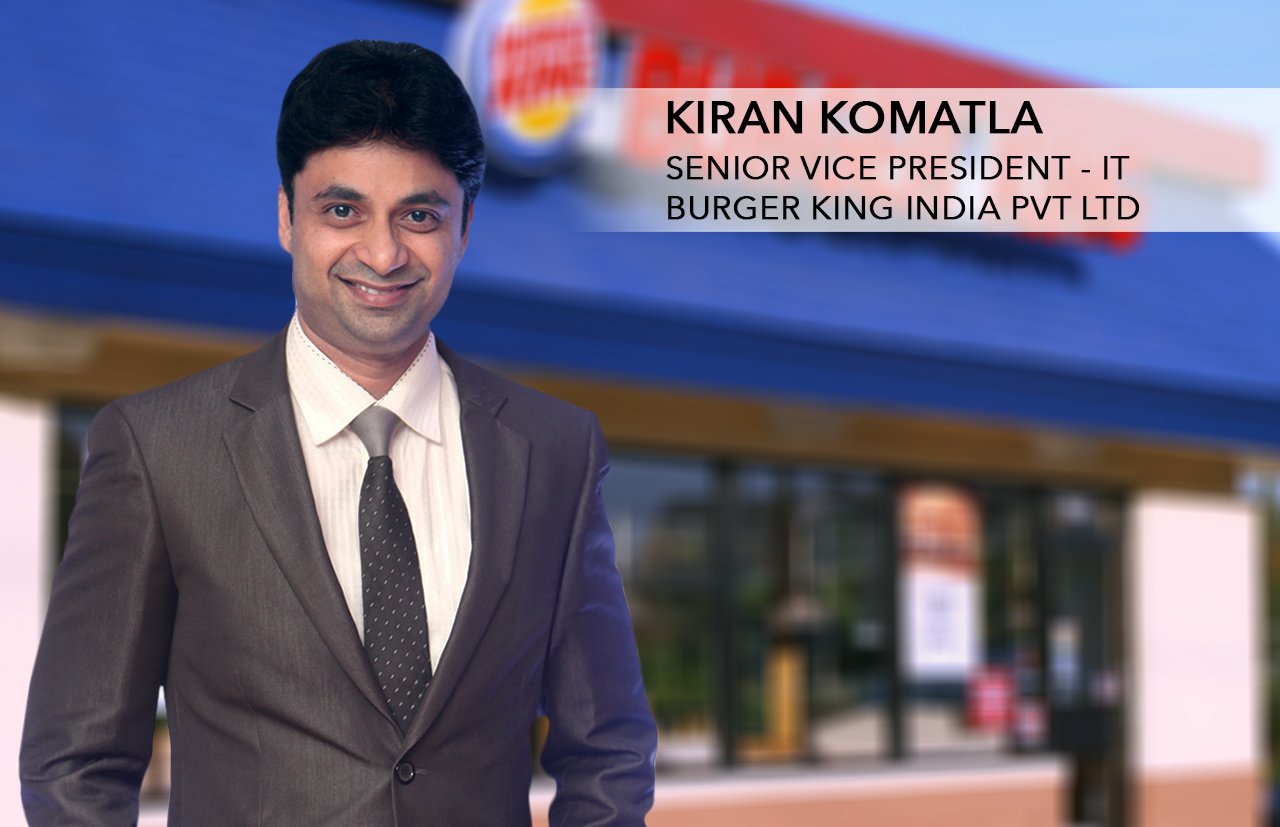The digital revolution, with its mobility solutions and use of AI tools, is taking internal efficiencies and customer experience to new heights, explains Kiran Komatla, Senior Vice President- IT, Burger King India Pvt Ltd.
How is the ‘modern restaurant’ concept faring in the Indian context?
Modern restaurant or QSR (quick service restaurant) and ACDR (affordable casual dining restaurant) formats include both national and global food innovators. Though the organised sector in these segments is less, they are growing at a substantial rate. National and international brands are aggressively expanding their outlets in various regions across the country.
How are technology and innovation paving the way for the next generation dining experience?
Technologies are helping reduce friction in the ordering process, making it easier to customise meals and reduce the wait time. Some apps allow diners to track meal progress in real time, from preparation to delivery. Others allow those in a rush to pre-order and pre-pay for meals for a more expedient dining experience. Mobile ordering systems incorporate geo-fencing capabilities; an SMS alert is sent to the kitchen when a diner is a certain distance away, prompting the kitchen to prepare the order so that it’s ready when the customer arrives. With all these solutions, the goal is to help restaurants meet the expectations of technology-savvy, mobile-engaged customers, and provide a superior customer experience.
What are the key ingredients of the next generation dining experience?
Today’s customers are tech savvy, well connected, and have high customer experience expectations every time they visit a restaurant. Digital menu, interactive guest technologies, customisable meals, speed of service, flexible payment options, personalised engagement and well-trained brand ambassadors are key factors in creating a next generation experience.
How are hyperconnectivity and the transition to digital technologies transforming the restaurant industry?
The digital revolution currently taking place is transforming not just restaurants, but the entire world. In the restaurant industry mobile, cloud, and AI are helping improve customer experiences and operational efficiencies. Mobile first strategies are now paying off for restaurants. They have created new norms, from frictionless ordering through mobile phones to online ordering and customised menus. Cloud adoption is assisting in quicker adaption of changes in restaurant POS software management and centralised operational and guest data across franchises or chains. Analytics, insights, and efficient inventory management across locations are helping us provide proactive services.
How does the use of AI in restaurants impact customer service?
AI is taking customer experiences and operational efficiencies to new heights. From machine learning to speech recognition, natural language processing to chatbots and process automation, major QSRs and multi-chain restaurants are adopting AI solutions to personalise food ordering and power customer support centres for accurate responses.
Customer service is a complex and very expensive business. AI can help reduce costs in processing customer requests by using automated self-service solutions and improve efficiencies. Chatbots can solve customer support desk queries, while AI can solve time zones and language barriers and enable 24/7, 365 days a year brand accessibility for customers.
Data is the powerful tool that will help improve customer experience. AI tools can process larger data sets and give proactive and actionable insights for quick and efficient actions. AI ensures more efficient processes and more effective service. Prescriptive and predictive analyses detect patterns and provide precious insights into customer behaviour and service processes. This will help in speed of service and service quality, while enhancing customer loyalty.
Research firms say that by 2020 more than 80 per cent of customer interactions will be done by AI-enabled tools, which will span digital channels, such as social media, chatbots, and online self-ordering kiosks and self-service tools.
How does the digital roadmap look like moving forward?
Today’s restaurant businesses need to invest in digital platforms and in store technologies for a digital experience at restaurants, and empower employees to serve as brand ambassadors. Restaurant brands that understand their customers will capitalise on digital technology investments and analytics to engage customers in a personalised way. This will drive increased frequency of orders, check size, customer conversion, upselling, and loyalty.
How should companies integrate the digital experience with their offerings to create a deeper customer connect?
Customers now interact with a company through multiple channels, from physical stores to websites, mobile apps, and social media. The digital customer experience is a combination of all digital interactions a customer has with a brand. Right from customers searching for a brand online to interacting with the brand on social media, purchase, and feedback on all digital platforms—they have to seamlessly give customers a single view. Brands need to take advantage of and be part of this technological shift by integrating these technologies with the customer and brand context. Every interaction with the customer, no matter how small, should be monitored and brands should make sure they are always connecting the dots to build deeper connects with customers.


